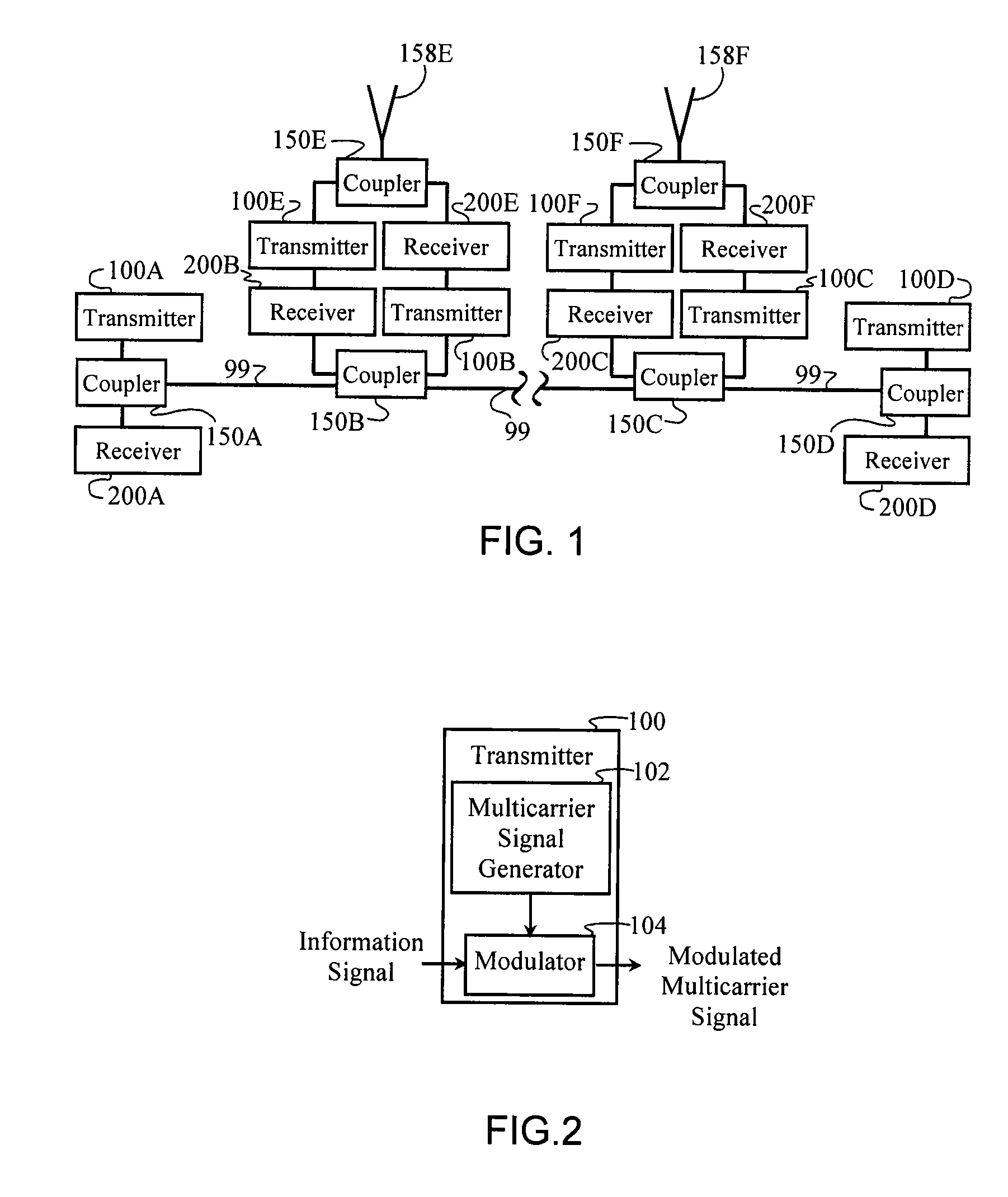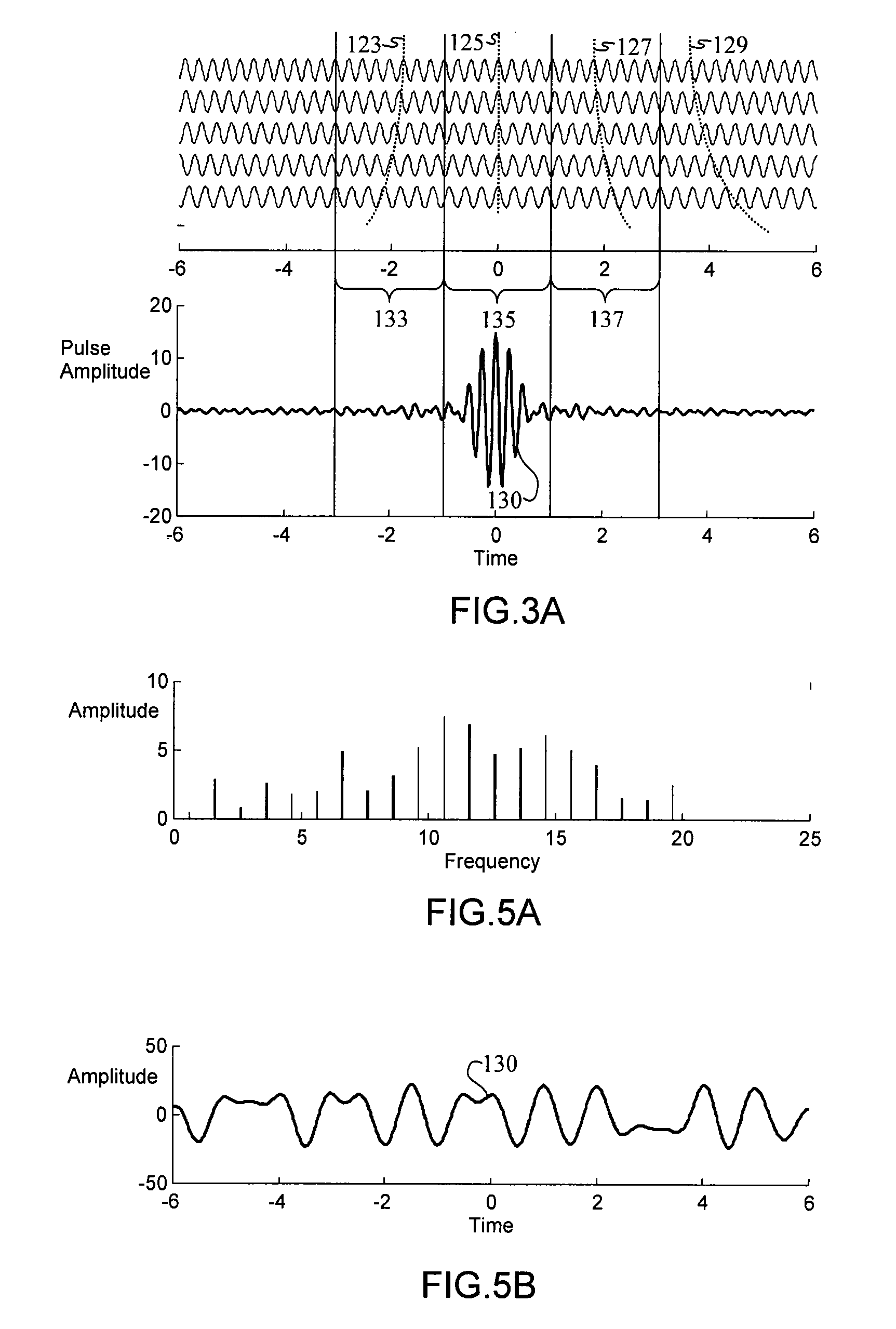Method and Apparatus for Using Multicarrier Interferometry to Enhance optical Fiber Communications
a multi-carrier and optical fiber technology, applied in multi-frequency code systems, multi-component communication, sustainable buildings, etc., can solve the problems of loss of orthogonality in the code space and contributing to all other code subspaces interference, and achieve the effect of facilitating local access services
- Summary
- Abstract
- Description
- Claims
- Application Information
AI Technical Summary
Problems solved by technology
Method used
Image
Examples
Embodiment Construction
[0075] The following description is directed toward the implementation of an optical-fiber network having a wireless interface at each node. The implementation of the invention can be directed generally to waveguide and wireless applications.
[0076]FIG. 1 shows the basic components of a high-capacity optical-fiber network that provides last-mile information delivery to individual users via wireless links. A plurality of couplers 150A, 150B, 150C, and 150D have different locations in a communication channel 99 that supports the propagation of electromagnetic communication signals.
[0077] A coupler (such as couplers 150A, 150B, 150C, and 150D) couples electromagnetic signals into the communication channel 99 or couples electromagnetic signals out of the communication channel 99. Couplers can include lenses, antennas, any type of electromagnetic-wave radiator, and any type of electromagnetic-wave receptor. A coupler may be a directional coupler.
[0078] The communication channel 99 is a...
PUM
 Login to View More
Login to View More Abstract
Description
Claims
Application Information
 Login to View More
Login to View More - R&D
- Intellectual Property
- Life Sciences
- Materials
- Tech Scout
- Unparalleled Data Quality
- Higher Quality Content
- 60% Fewer Hallucinations
Browse by: Latest US Patents, China's latest patents, Technical Efficacy Thesaurus, Application Domain, Technology Topic, Popular Technical Reports.
© 2025 PatSnap. All rights reserved.Legal|Privacy policy|Modern Slavery Act Transparency Statement|Sitemap|About US| Contact US: help@patsnap.com



